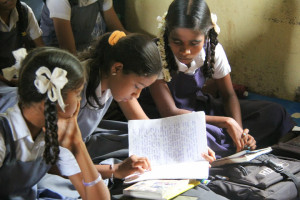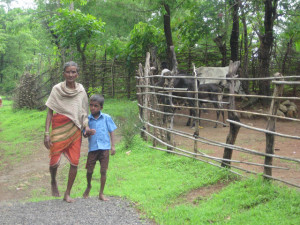Student Testimonials
“The Discover program has helped me develop self-confidence and self-reliance. It has helped me develop the confidence to speak up in class and ask questions. This program helps rural students like me get a glimpse of the outside world. I have no doubt that all the topics that I have learned in the last 3 years have transformed my educational experience. ”
Name: Jadhav Bhavesh Satish
School: Kunzre High School
Grade: 10th
“I used to be afraid of mathematics and found it to be a very difficult subject. Since I started in the Discover program, I am no longer afraid and I am beginning to enjoy learning mathematics.”
Name: Rituja Naresh Jadha
School: Kev High School
Grade: 10th
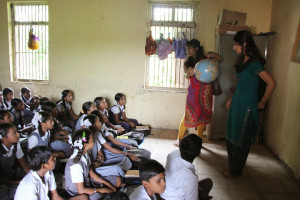
Project Location
The project serves over 1,000 students in 12 schools, two of which are residential, located north of Mumbai, in the Thane district of Maharshtra. These schools serve the migrant Adivasi Tribe.
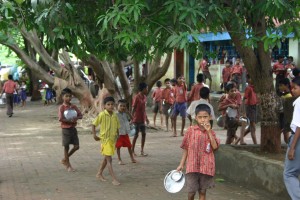
How Many Students Are Part of the Program?
Approximately 1,000 students, from eighth to tenth grade, benefit from our efforts and your contribution.
Budget
REAL currently provides an annual grant of $12,600
Over the last 11 years REAL has donated a total of $93,000 towards this program.
Timeframe
The project began in August of 2011 and is currently being continued and expanded to encompass a Mobile Science Program. The Discovery program now includes a Mobile Library van containing books and laptops for students to use.
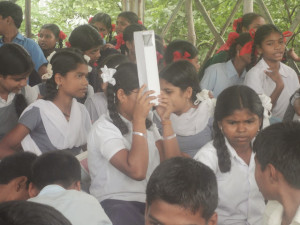
Summary
This project provides 8th to 10th grade students with essential concepts and skills in core areas, Math, Science, Geography, English. This grant provides funds for:
1. Teacher training, through workshops and classes, on lesson planning, activity-based teaching styles, assessments, and evaluation. Overhead projectors, and magnetic boards supported by worksheets, to increase the efficiency of the lessons.
2. Direct intervention with 10 students from each school, from the eighth and ninth grades, to create a group of student leaders and tutors. The students will mentor their peers, using materials given to them. This is a pilot program, which will explore how well students learn from their peers.
3. Stronger fundamentals will be built. Traditionally, students are forced to work within a culture that is oriented towards grades, and scores, instead of learning. With interactive, and varied, activities, this will change. The quality of education will increase, students will experience joy in learning, and the high dropout rates will decrease.
4. Testing to determine current levels of competence and subsequent impact of program.
Regional Profile
Over 95% of the population is tribal
Literacy rate of the tribal population is close to 37%, significantly lower than than the global average of 86.3%.
Most villages have no educational facility within 5 to 10 km.
84.28% of villages do not medical access.
High infant mortality
Only 12% of households have toilets.
50% are farmers, 50% of land is cultivable, but barely 0.79% of the cultivated area is irrigated. Consequently, cultivation is near impossible after the monsoons. On average, agricultural produce supports partial food needs of families for 5-6 months in a year. Land degradation, and falling yields, is a consequence of high usage of chemicals for agriculture.
65.5% of the working population do not work, which is leading to worsening poverty in the area. Entire families, or working members, migrate between November and May to meet basic livelihood needs. This results in hardships for the old, sick, children deprived of basic education, and the migrant, who is separated from his family, works in bad conditions, is exploited, becomes ill, and later, brings these illnesses into the tribal community.
History
The Dr. M. L. Dhawale Memorial Trust (MLDT) was established in 1987 to carry on the work of Dr. M. L. Dhawale, an eminent Homoeopathic clinician, educationist, and compassionate human being. The MLDT has, at its core, the mission of promoting positive health in a cost-effective manner. Over the last 18 years, MLDT has established effective infrastructure for providing rural and tribal healthcare in the Palghar, Vikramgad and Wada talukas in the Thane district of Maharashtra. Over several years, members of the organization realized that the only way to improve the health of tribal communities was to focus on holistic integrated development programs, which improve the health, livelihood, and education of community members.
In 2009, MLD Trust created the Discover Program which REAL has funded for 5 consecutive years. MLD Trust implemented the Discover Program with these six schools
1. Ashram School
2. Bhopoli High School
3. Kurze High School
4. Kev High School
5. Uprale High School
6. Vatsalya Ashram School
Organization’s Approach
To provide infrastructure to improve the health, livelihood and education of people in the Palghar, Vikramgad and Wada talukas in the Thane district of Maharashtra.
The MLDT found that the rural people needed food, employment, and better living conditions – not just medicine. To respond to this felt need, they have focused on:
- Empowering the people themselves, through employment, education, newer agricultural techniques, and promotion of tribal art
- Building local leadership by identifying educated people who can lead their own communities
- Regenerating human and natural resources with optimal resource planning and utilization
The Dhawale Trust Fund works to improve Holistic Community Care, which includes:
- Community Health Needs – Preventive, Promotive, Curative through Homoeopathy, Hygiene, Nutrition
- Human Resources – Education, Livelihood, Finances
- Environment and Natural Resources – Land, Water, Plants, Animals
- Talent – Arts, Crafts, Culture
- Knowledge – Community-Based Research
To promote education, the Dhawale Trust Fund is working with six schools to:
- Provide for basic personal and academic needs, including academic covering uniforms, exercise books, workbooks, compass boxes, etc.
- Tutor students in math and English.
- Improve teachers through workshops.
- Educational tour.
- Organize sports, and cultural, meets.
- Give scholarships to outstanding students to pursue further education.
- Run a mobile library for children.
- Develop vocational education relevant to the rural context, including an introduction to basic rural technology course (IBT).
- Start environmental programs in the schools, as part of the larger efforts to educate about and encourage sustainable livelihood and eco development goals.
Dhawale Trust – Education @Bhopoli – Website
Life of the People
Due to misconceptions and little education, unhealthy practices persist. For example, a pregnant woman is made to do domestic and field work until the day of delivery, and then resume again five days after the birth. She is given less food to eat, and made to eat after everyone else in the household, because people think her child will be harder to deliver if it is larger. This pregnant woman may very well be a teenage girl, because early marriage, combined with little education, leads to early pregnancy, and many children. Girls are illegally married (with false certificates from village officials) by the time they are 15 or 16, while boys are married between the ages of 16 and 20. These marriages are conducted in April and May, when families have money, in order to absolve parents of the responsibility of their children.
As far as schooling goes, in village schools, one teacher, from far away, manages first through fourth grade. The teacher must find his pupils and get them to school, because many parents don’t. Instead, girls above five, for example, are used for babysitting and other chores. In addition to teaching and rounding up students, the teacher does other administrative jobs for the school. Unfortunately, the child’s education, and future, depends on the, often nonexistent, ability, and motivation, of the teacher. Fifth, and higher, grades are far away from the village, and few parents can afford to send their children. Furthermore, the Adivasi population is largely dependent on agriculture. Therefore, parents prefer them to work, as opposed to attending school
Statistics for the Vikramgad Taluka, in the Palghar District (Based on 2001 Census Data)
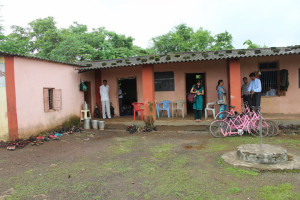
- Over 95% of the population is tribal.
- The literacy rate for tribals is 25.84%; for women, the rate is 14.53%, while for males, it is 36.82%. The general literacy rate is 69.54%.
- 67 villages have no educational facility within 5 to 10 km.
- 84.28% of villages do not have any type of medical facility. 44% must travel more than 5km to reach a medical facility, which is difficult because the sick must be physically carried over long and rough terrain.
- The infant mortality rate (before three years old) is 116 per 1000 males, and 99 per 1000 females. This is significantly higher than the national average, and in parts of Maharashtra, community health programs have brought rates down to from 180 to 25 per 1000 in 15 years (source: People’s health in People’s hands, Dr. N. H. Antia, Kavita Bhatia, FRCH).
- Only 12% of households have toilets.
- 50% of the working population are cultivators. Around 50% of land is cultivable, but barely 0.79% of the cultivated area is irrigated. Consequently, cultivation is near impossible after the monsoons. On average, agricultural produce supports partial food needs of families for 5-6 months in a year. Land degradation, and falling yields, is a consequence of high usage of chemicals for agriculture.
- 65.5% of the working population do not work, which is leading to worsening poverty in the area. Entire families, or working members, migrate between November and May to meet basic livelihood needs. This results in hardships for the old, sick, children deprived of basic education, and the migrant, who is separated from his family, works in bad conditions, is exploited, becomes ill, and later, brings these illnesses into the tribal community.

